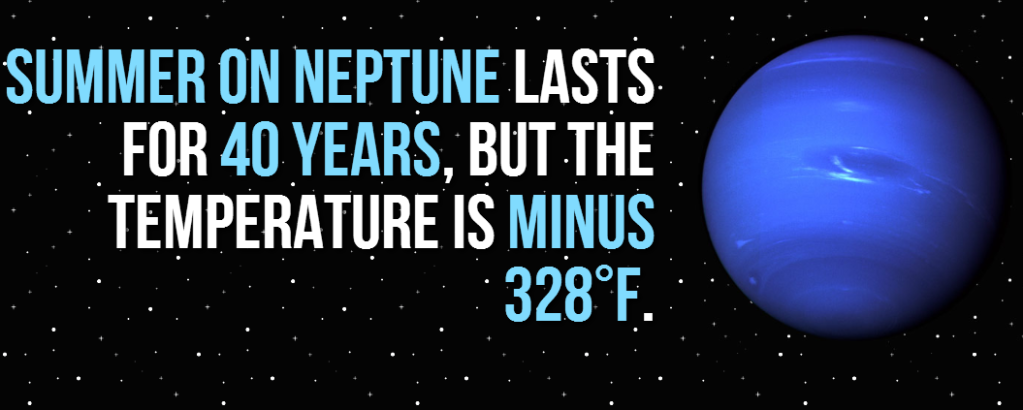

It took Voyager 2 twelve years and five days to get the closest that any manmade object has gotten to the last planetary outpost of our Solar System: NEPTUNE. The digital information of this awe inspiring photograph traveled for at least four hours to reach our planet through 4.498.000.000 km of void.
For some preservative, if the Earth were the size of a grain of sand, this distance would represent approximately 50 meters (164 feet). This gigantic blue sphere, which is almost 58 times as voluminous as Earth and 17 times as massive, brings to mind the beauty of our terrestrial sky and the vastness of our oceans, so no name could have fit better than that of the god of the Roman seas. The blueness of Neptune is given mainly by the presence of methane in its atmosphere. Just like its twin Uranus, the atmosphere is mostly hydrogen and helium, but it also contains methane, ammonia, and water (though Neptune’s color is far more intense and the penetrating blue is thought to originate out of the presence of some yet unknown component located in its upper layers).

The smoothness and softness that the image conveys, just as if it were tranquil blue lagoon with elongated brilliant clouds hovering above, can be quite misleading if we wanted to imagine how it would feel to dive into it. If you dove near to its equator the strongest winds in the Solar System would be waiting to fling you around: 325 m/s (1066 feet/sec). In the picture, the deep blue spot (named “Great Dark Spot”) is a storm so huge that the entire Earth could fit in it. The Great Dark Spot dissipated some time later, but other similar storms have been spotted by Hubble, so they might be very common.
Another feature of the atmosphere that would quite shatter to pieces the blue lagoon analogy is the temperature: 72 to 52K (-330 to -366 F). This is not surprising if we consider how far it is from the Sun and that the strength of the solar radiation drops by the Inverse Square Law. Nevertheless, a bigger riddle arises at this point: where is the energy to propel such insane weather coming from? Besides, the planet radiates about the same energy than its twin Uranus, but receives less than half the sunlight… let’s keep diving.
As we struggle with the brutal winds and try not to asphyxiate, the temperature and pressure builds up rapidly until we fall in a sea of mainly liquid water with a mixture of ammonia and methane. This “sea” is a far cry from our blue lagoon since it has a temperature of about 2000K (3140F) and gets to 5000K closer to the core (8540F). In spite of this fact, astronomers keep referring to it as a “ice giant”. This temperature difference gives rise to strong convection currents which are one of the sources of the extreme weather found in the atmosphere; other forces like the inclination of the magnetic fields with respect to the rotation axis of its core also contribute.
At the immense pressures that are expected to be found here (at least several hundred thousand times that of Earth at sea level), the hydrogen and all other components in the atmosphere condense into metallic liquid, including the methane that may likely be broken down into individual atoms of carbon and hydrogen. The individual atoms of carbon resulting from this process might rearrange into diamonds under such conditions: there are very likely diamonds “raining” down Neptune’s mantle as you read this. They would sink down to the core of the planet that is a rocky sphere about the size of the Earth. These extreme processes are most probably the source of the extra energy that the planet radiates: Neptune is still in the process of collapsing on itself. So you might have not found the tranquil waters of a blue lagoon, but a rain of diamond dust might well make it up for it.